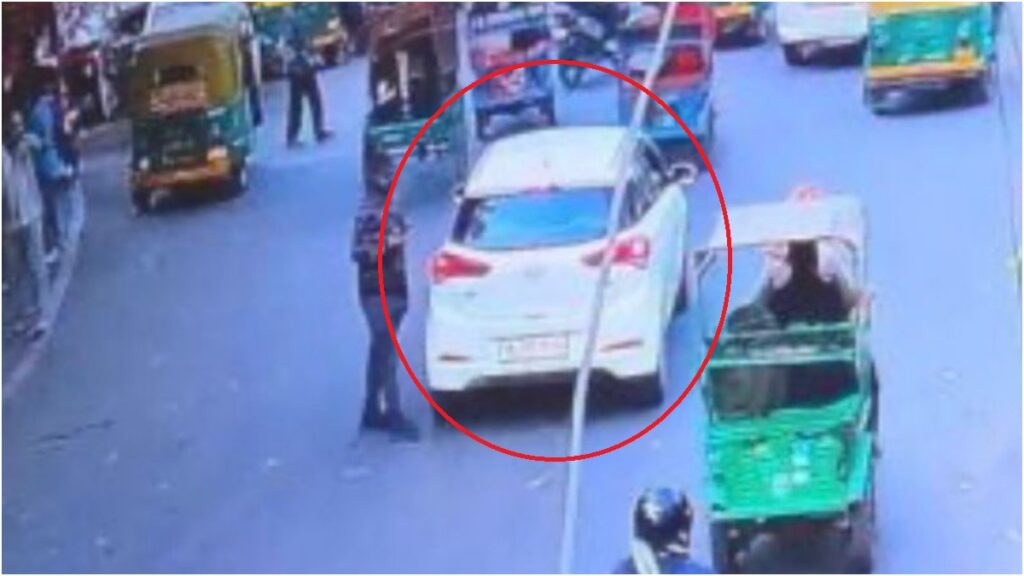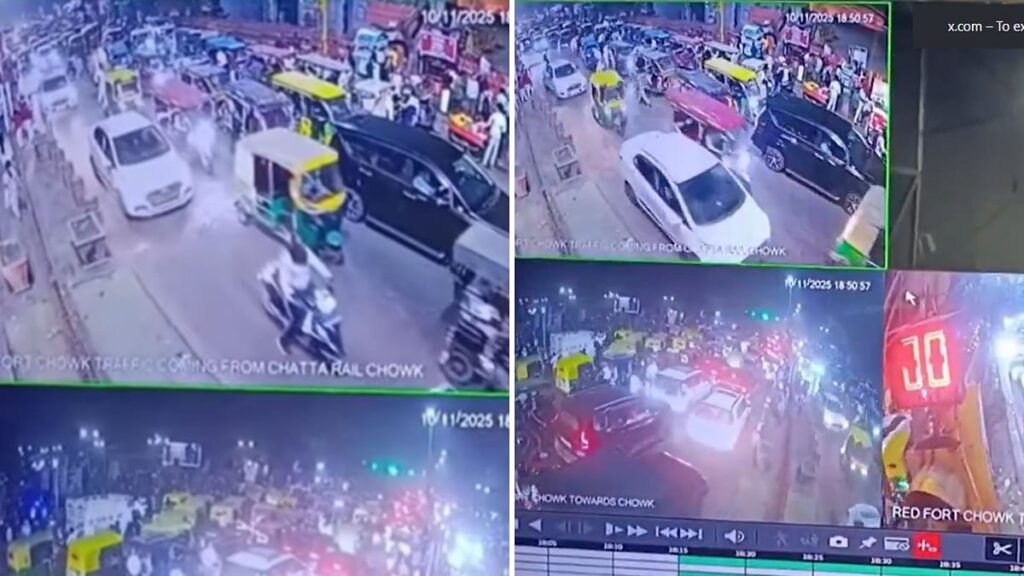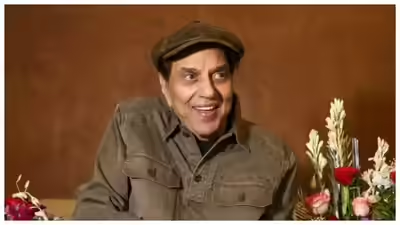What Happened
On the evening of 10 November 2025, a dramatic explosion rocked a busy traffic junction just outside the historic Red Fort area in Delhi. The blast occurred around 6:52 pm IST, when a white Hyundai i20—stationed near a traffic signal at Gate 1 of the Red Fort Metro station—detonated, resulting in multiple casualties. (www.ndtv.com)
Initial reports indicate that the blast was caused by an explosive device placed inside or on the car, which set off a fireball, damaged nearby vehicles, and caused body parts and debris to scatter in the area. (AP News)
Casualties & Immediate Impact
Authorities report that at least eight to thirteen people were killed, and around 20 or more injured in the explosion. (Al Jazeera) Many of the injured were rushed to nearby hospitals, while fire-services extinguished the blaze that spread to multiple vehicles. (Wikipedia)
Location and Significance
The blast occurred in the heart of Old Delhi, near a major tourist landmark and metro station, during a time of heavy traffic. CCTV footage shows slow-moving vehicles, the i20 arriving earlier and then lingering in the area before exploding. (www.ndtv.com)
Because the Red Fort area is both densely populated and symbolically important (being an iconic monument and tourist zone), the explosion triggered major concern about public safety, watching of security lapses, and potential terrorist involvement.


Investigation & Preliminary Findings
- The probe has been taken over by India’s national anti-terror agency, National Investigation Agency (NIA), and the matter is being investigated under the Unlawful Activities (Prevention) Act (UAPA). (The Guardian)
- Forensic teams have recovered multiple samples at the scene: fragments consistent with explosives, cartridges, and vehicle debris. (Hindustan Times)
- Intelligence sources suggest the blast may have been triggered “prematurely”—that is, the device may not have been fully prepared or the plan may have been aborted, resulting in a “panic detonation”. (India Today)
- A key suspect, a doctor named Umar un‑Nabi, reportedly died in the explosion, while his associate Muzammil Shakeel is under questioning. They are allegedly linked to a terror-module based in Faridabad, Haryana. (www.ndtv.com)
- CCTV footage shows the car arriving in the area around 3:19 pm, parked for over three hours, and then moving before the blast. (Wikipedia)
Possible Motives & Larger Context
While the full motive remains under investigation, several factors stand out:
- Investigators report that the suspects had re-scouted (“recce”) the Red Fort area, and had planned for potential attacks on major dates (e.g., 26 January) and during the Diwali period. (www.ndtv.com)
- Given the invocation of anti-terror laws and the retrieval of large quantities of explosives from a separate raid (in Faridabad) earlier the same day, authorities are treating this as much more than a vehicular accident. (www.ndtv.com)
- The blast comes amid heightened security tensions in India, especially along with cross-border terror concerns and previous militant modules. The timing and target suggest that the attempt was to cause high casualties or symbolic damage.
Response & Aftermath
- Narendra Modi (Prime Minister of India) and Amit Shah (Home Minister) condemned the attack, vowed to bring the perpetrators to justice, and promised stronger security measures. (Reuters)
- Security was immediately stepped up in Delhi: roadblocks, increased checks at metro stations, heightened vigilance around monuments, transport hubs and tourist spots. (AP News)
- Across other major Indian cities, police & intelligence agencies were alerted; e.g., in Mumbai, hotel guest checks and movement restrictions were placed. (The Times of India)
- Public reaction includes fears of intelligence and security breakdowns. Some opposition figures have questioned how such an incident could occur in the national capital in a sensitive zone. (Hindustan Times)
Implications & What’s Next
- The attack raises worrying questions about vulnerability of public spaces, especially historic/ tourist areas and busy junctions in Indian metropolises.
- It may signal a shift in tactics: from mass-casualty bombings in crowded markets to vehicle-borne explosives near symbolic sites.
- Intelligence agencies will likely reassess pre-emptive detection, local surveillance, vehicle-parking/bomb-threat protocols, and rapid response in high-risk zones.
- For the public: enhancing awareness of suspicious vehicles/activities, strengthening eviction of illicit parking near monuments, and integrating surveillance systems with faster forensic response.
- Legally: the UAPA invocation indicates the possibility of designating the incident as terrorism rather than an isolated criminal act, with more severe investigative powers and punishments.
Conclusion
The car explosion near the Red Fort in Delhi is a serious security breach with tragic loss of life and a major wake-up call for urban safety in India. While investigations continue, the signs point to a disrupted terror plan rather than a mere accident. The zone of vulnerability—cultural landmark, metro access, dense traffic—was exploited. The response and case outcomes will significantly influence India’s counter-terror posture going forward.


